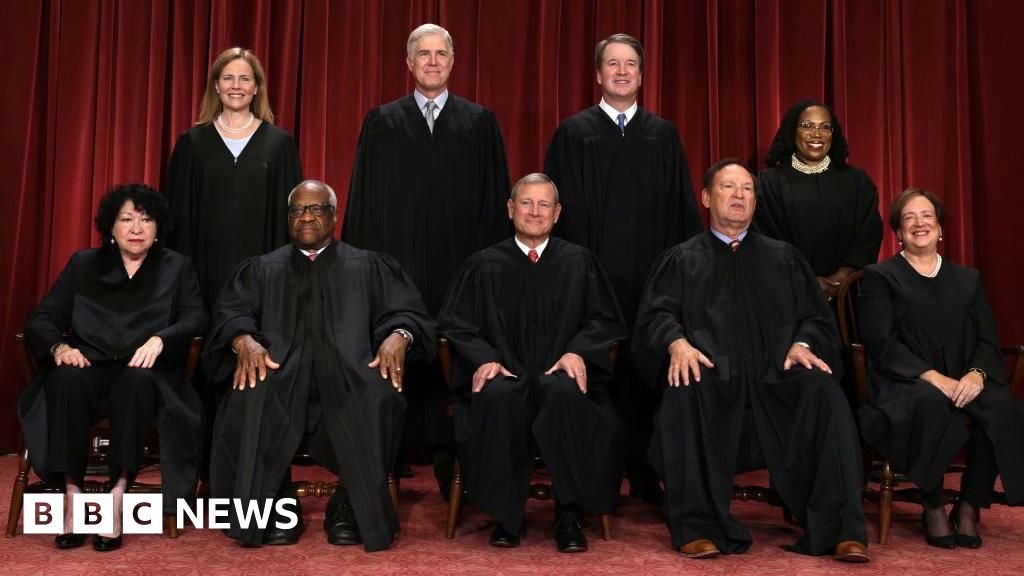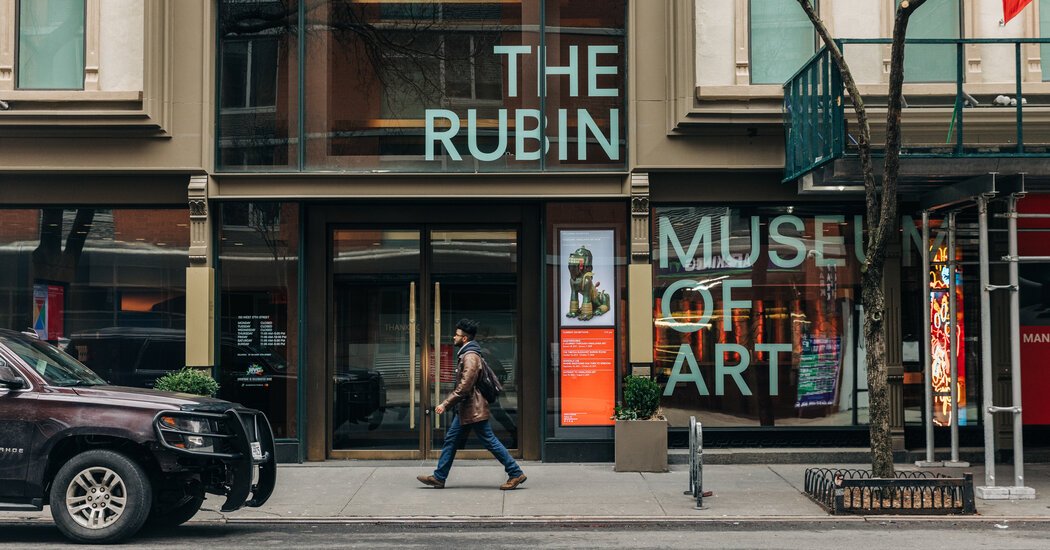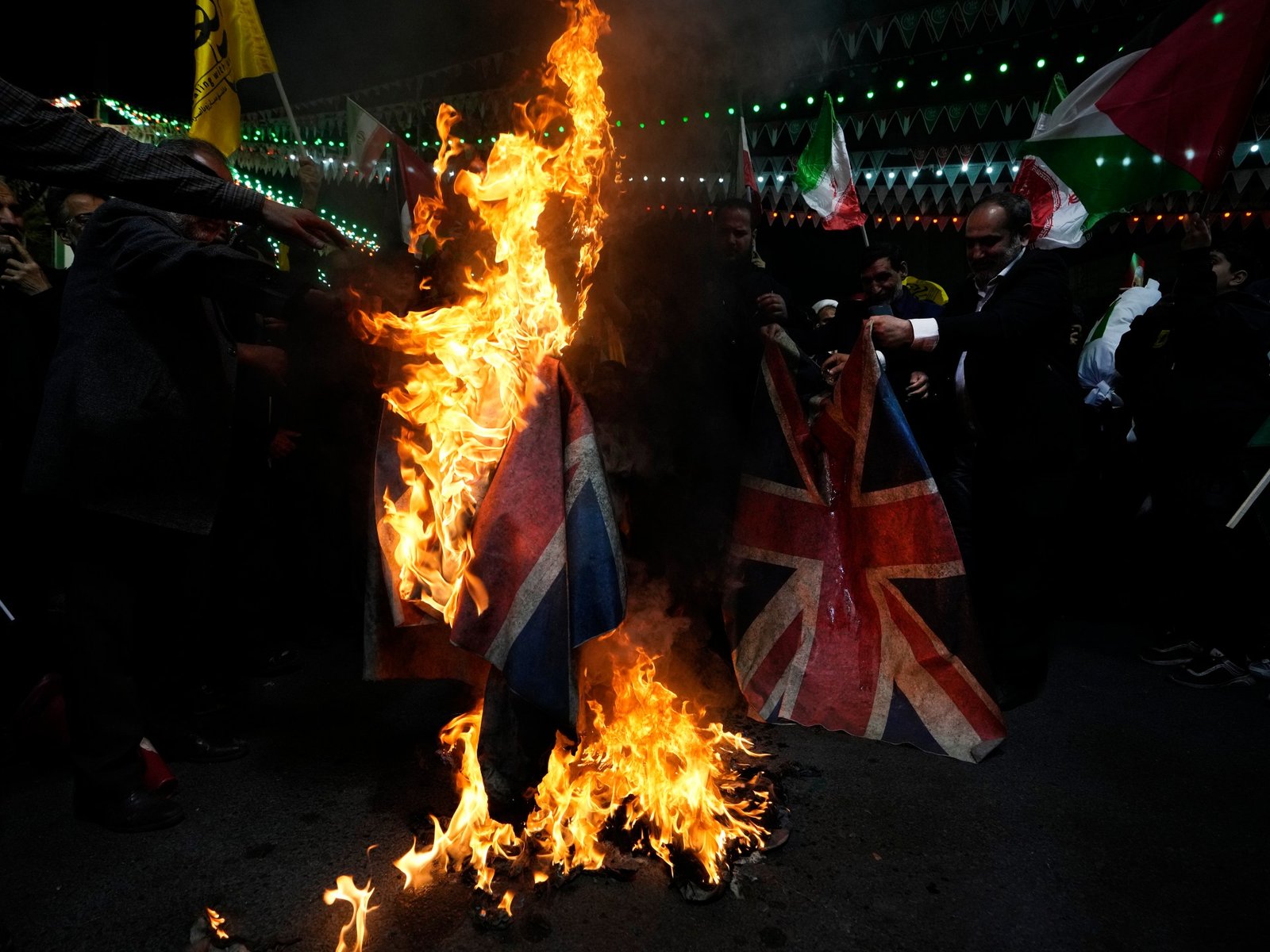With decisions on everything from civil rights and the environment to guns and religious freedoms, the US Supreme Court has always played a powerful role in American life.
But that role has been changing in some ways, with the court’s nine justices – unelected and able to serve for life – now looming larger in the country’s politics.

As the grand finale of its 2023-2024 term, the court issued a decision to settle what Chief Justice John Roberts wrote was a “question of lasting significance”, by ruling that Donald Trump and other ex-presidents have a wide (but not absolute) immunity from criminal prosecution for their actions in office.
While Trump hailed the decision as a “big win” for democracy, President Joe Biden said it undermined the “rule of law” and was a “terrible disservice” to Americans.
Let’s take a look at the Supreme Court and how the staid and historically respected body has become a political battlefield.
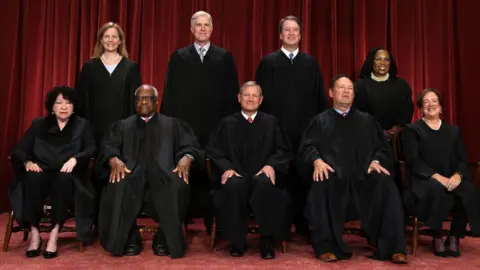 Getty Images
Getty ImagesWhat does the court do?
Put simply, the Supreme Court is the keeper of US laws.
The justices decide whether laws and government actions follow the US constitution. They also interpret laws passed by congress to decide if they are being correctly carried out.
Lower courts have to follow the precedent set by the Supreme Court, under a legal principle known as “stare decisis” – Latin for “to stand by a decision”. That gives its decisions national and long-term importance.
Most cases reach the Supreme Court by climbing up a ladder of appeals through lower federal courts or the state courts. Even though the Supreme Court receives more than 7,000 petitions a year, it only hears about 100 or so cases each term. The justices follow the “Rule of Four”, where they review a case if four of them believe it has merit.
By design, the court is supposed to be insulated from political change and the justices from political pressure in making their decisions.
Americans do not vote for who can serve on the court. Justices are appointed by the president and then approved by the Senate.
They serve for life or until they voluntarily retire, and they can only be removed by impeachment. Congress has only attempted an impeachment once, more than 200 years ago, and it failed.
Who is on it?
In practice, the court structure means that one of the most consequential decisions a president can make is picking a justice.
Currently, conservatives hold a strong majority with six justices on the bench.
Three of them – Neil Gorsuch, Brett Kavanaugh and Amy Coney Barrett – were appointed by Trump.
Republican Presidents George W Bush and George HW Bush appointed John Roberts, Samuel Alito, and Clarence Thomas.
Two of the three liberal judges – Sonia Sotomayor and Elena Kagan – were nominated by Barack Obama. Ketanji Brown Jackson was picked by Mr Biden.
Politics have played a role in appointments “since the very beginning of this country”, said Jonathan Entin, a law professor at Case Western Reserve University in Ohio who researches the Supreme Court. But the fractiousness of current politics has changed the dynamics on and around the court.
“Democrat presidents tended to appoint Democrats and Republican presidents tended to appoint Republicans,” he said. “What’s changed is that the parties themselves have become more polarised.”
“People in both parties have paid particular attention to judicial ideology going forward,” Mr Entin added. “So it’s much more contentious than it used to be.”
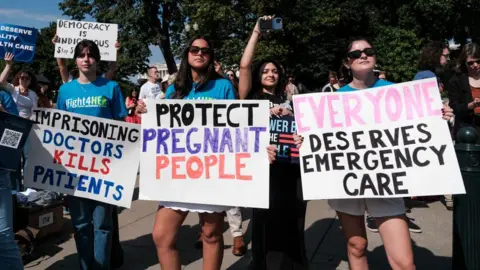 Getty Images
Getty ImagesTwo years of monumental decisions
The court has only had its current make-up, with conservatives dominating the bench, since 2022. But in that short stretch, it has created a massive shift in the country, starting with ending the constitutional right to abortion in June of that year.
In just the last few weeks, along with presidential immunity, it ruled that federal prosecutors overreached when they used an obstruction law against 6 January rioters, struck down a ban on federal “bump stock” devices for guns, and rejected an effort to restrict access to the abortion pill mifepristone.
It also slashed and weakened the powers of agencies such as the Environmental Protection Agency by overturning a previous ruling that judges should defer to federal agencies in interpreting ambiguous parts of laws. That decision, along with other recent rulings related to regulations, will move many powers from federal agencies to the court system.
Last year, the justices also struck down US President Joe Biden’s proposal to wipe out billions in student debt and that race-based university admissions policies at Harvard and the University of North Carolina could no longer be used, upending decades-old US policies on so-called affirmative action.
What happens behind the scenes?
The Supreme Court goes to enormous lengths to protect its internal deliberations, with almost all its work – such as reading briefs or writing and circulating – taking place behind closed doors.
Because its process seems almost impenetrable, the country was shocked when the Dobbs decision overturning Roe v Wade was leaked to the press.
Face-to-face deliberations, similarly, take place in secrecy, with no staff present.
Justices sit around a large table in order of seniority, each armed with a book and notebook.
In an interview with the BBC earlier this year, former Supreme Court Justice Steven Breyer said they then “have a real discussion” about cases.
Beginning with the chief justice, they each give their legal opinions on a case and why they are – or are not – persuaded by various arguments.
“No one speaks twice until everyone has spoken once,” he said. “If you try to make a point saying that ‘my argument is better than yours’…that’ll get you nowhere.”
“But if you listen to what other people are saying, and then at the end of the first round you pay attention and say that ‘you have a point there, but I think it would be better if we did this’…then you have a real discussion about it,” he added.
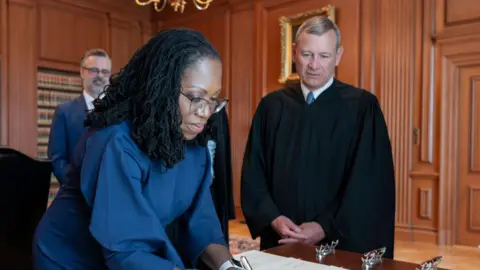 Getty Images
Getty ImagesCalls for change
As the court has taken on momentous decisions, and overturned decades-old rulings, it has faced growing accusations of politicisation and partisanship.
In September, 58% of Americans disapproved of the way the court was handling its job, the highest level in more than 20 years, according to Gallup.
Outcries over judicial ethics have recently grown stronger, after journalists investigated Justice Thomas for not reporting gifts and Justice Alito’s family flying flags at his home that are considered symbols of the Capitol rioters.
Last year, for the first time in its history, the court released a code of conduct. But the code does not have any enforcement mechanism and advocates, including top lawmakers, are calling for stronger and farther-reaching reforms.
They have suggested a binding code of ethics, expanding the number of judges in lower courts, creating an independent ethics office and – importantly – imposing term limits.
Some have floated adding more justices, although polls suggest that is broadly unpopular among Americans.
Maggie Jo Buchanan, the managing director of reform advocacy organisation Demand Justice, told the BBC that staggered 18-year term limits could, for example, “depoliticise” the court and make it more balanced and representative of the US populace.
“In that way, every president would have the same number of appointees,” she said. “That would ensure that the Supreme Court better reflects the will of the people.”
“Right now, the Supreme Court’s appointments are happenstance politically, whether from time of retirement or an unexpected death,” Ms Buchanan added. “In a Supreme Court that has such power over our rules, a one-term president shouldn’t have more appointments to the bench than a two-term president.”
Other experts have cautioned that structural changes, many of which would require a constitutional amendment, are unlikely to be possible or popular.
“There is a lot to be said for stability,” said Clark Neily, senior vice president of legal studies at the Cato Institute, a Washington DC-based libertarian-leaning think tank that advocates for “small government.
“There’s a lot to be said for not changing the way that a particular institution works, even if there are problems with it,” he added.
Mr Neily – a former litigator who was co-counsel in a 2008 Supreme Court case where a Washington DC gun law was ruled unconstitutional – said that an institution that “has the last word” on the constitution will likely always generate controversy.
“There’s no avoiding that,” he said. “And I don’t think that anybody has really presented a proposal that seems clearly likely to do better than what we have now.”

